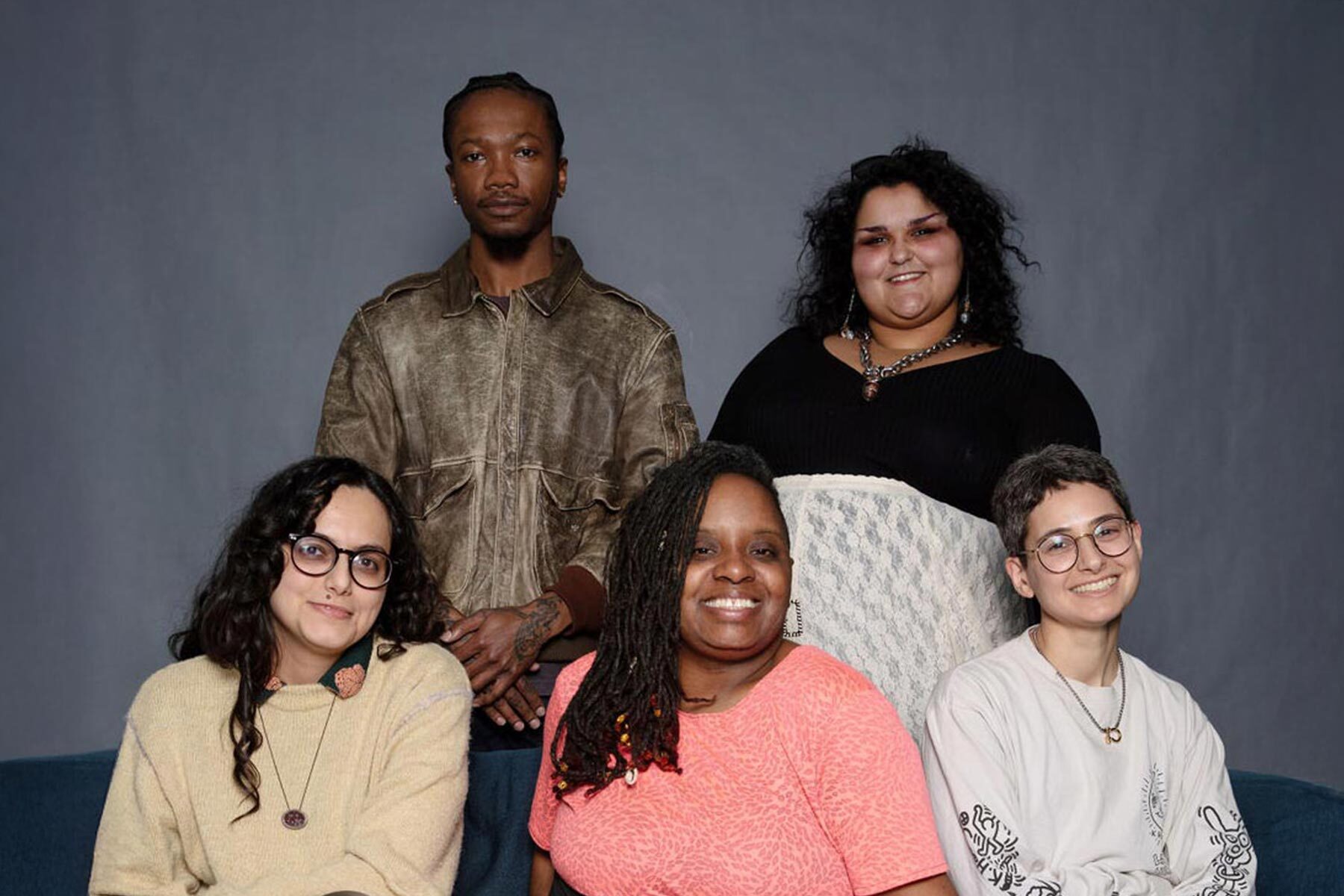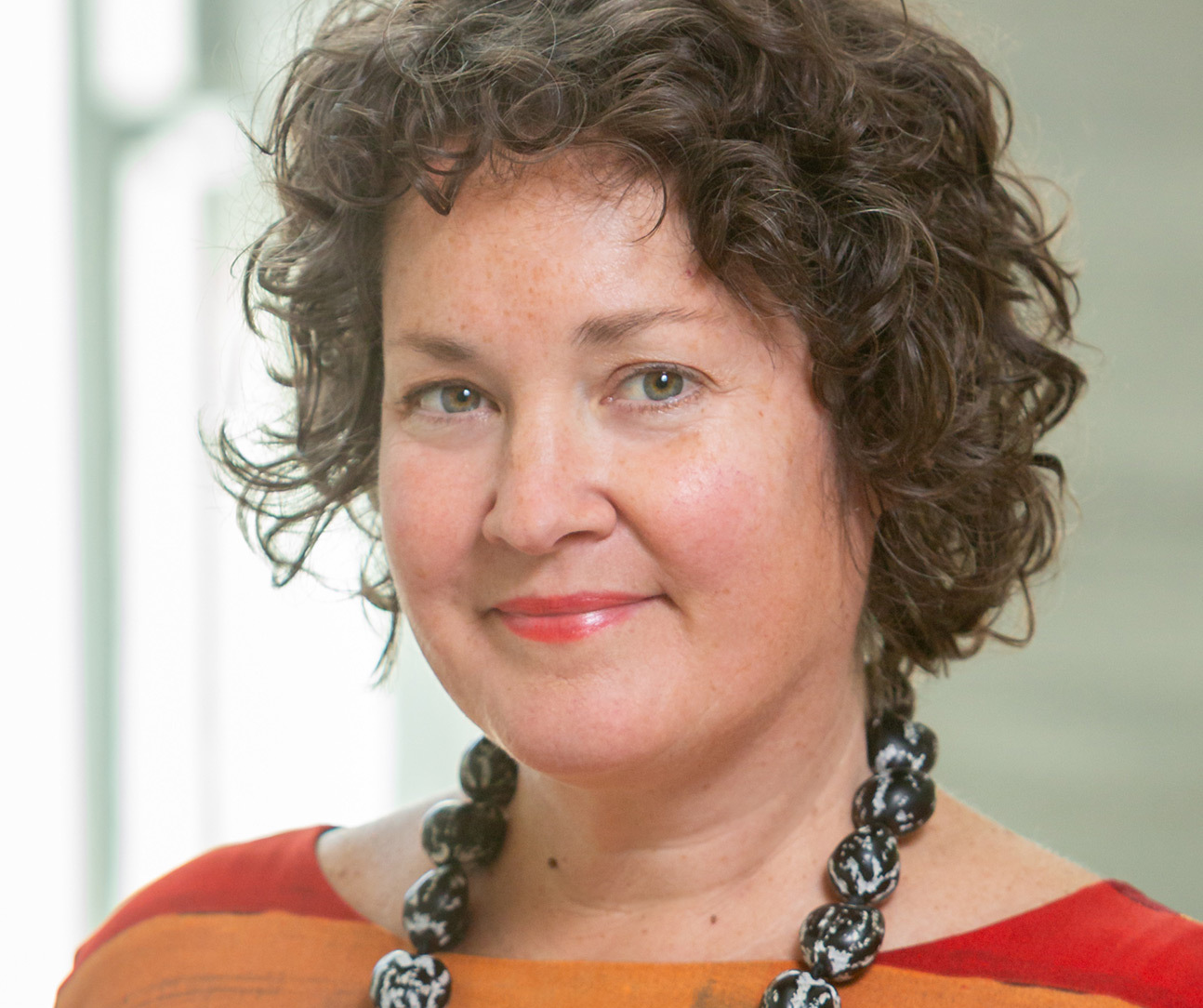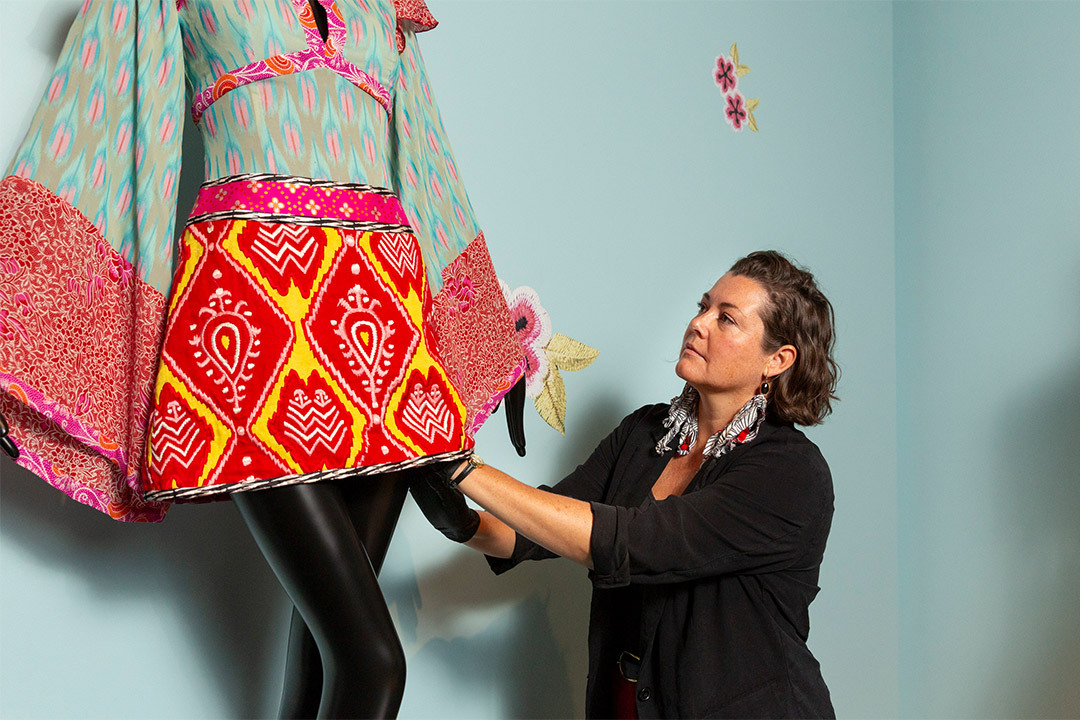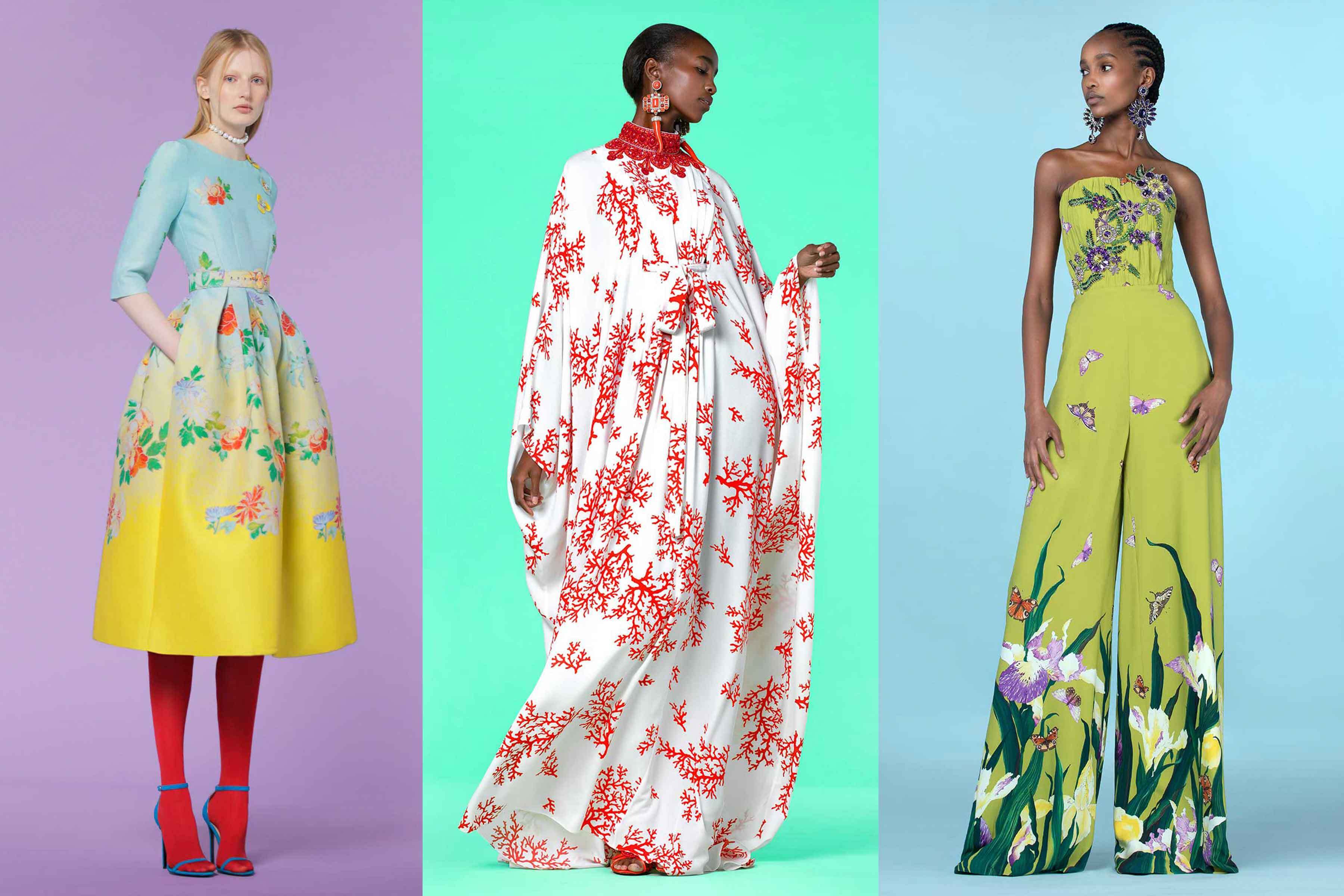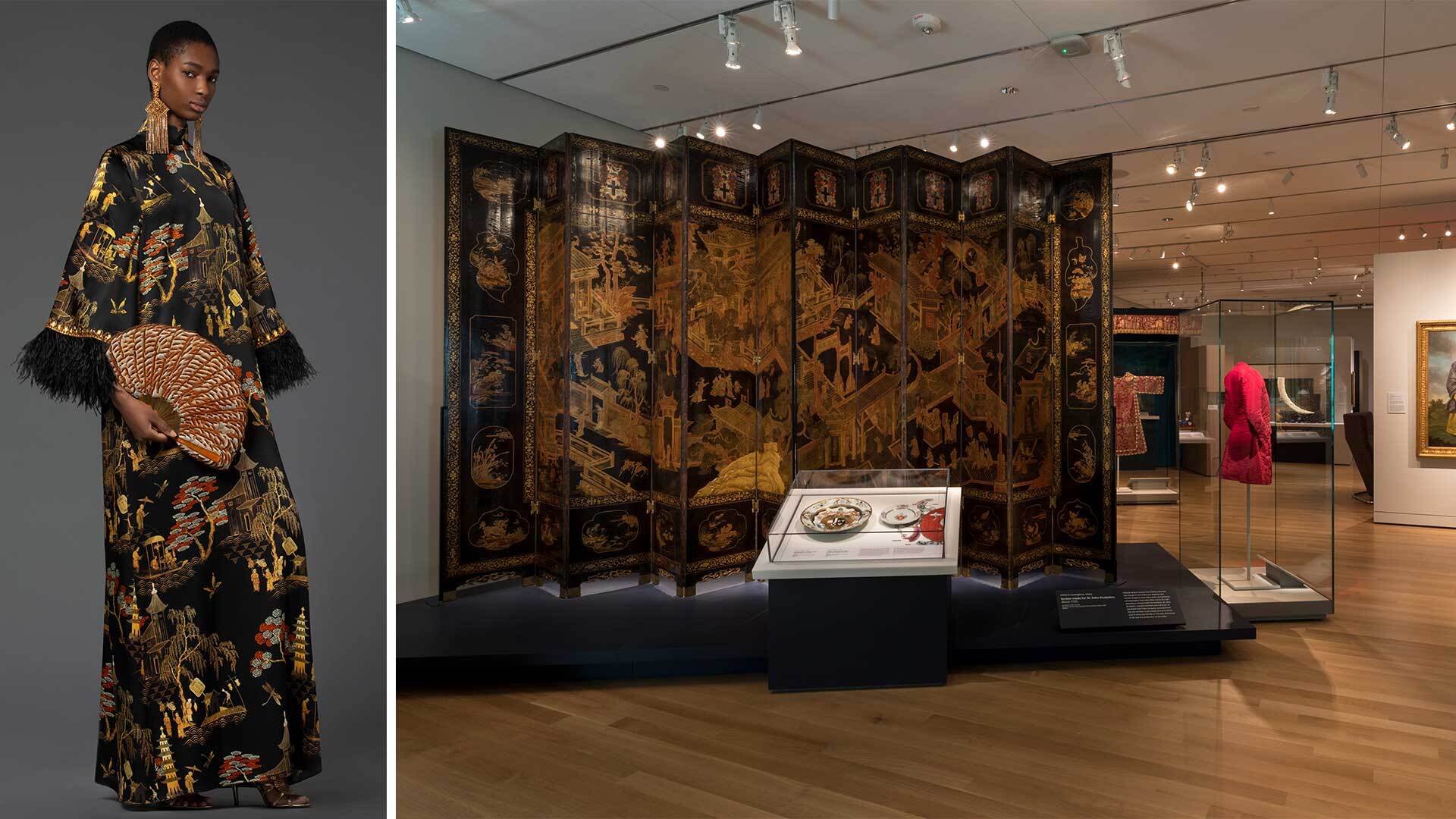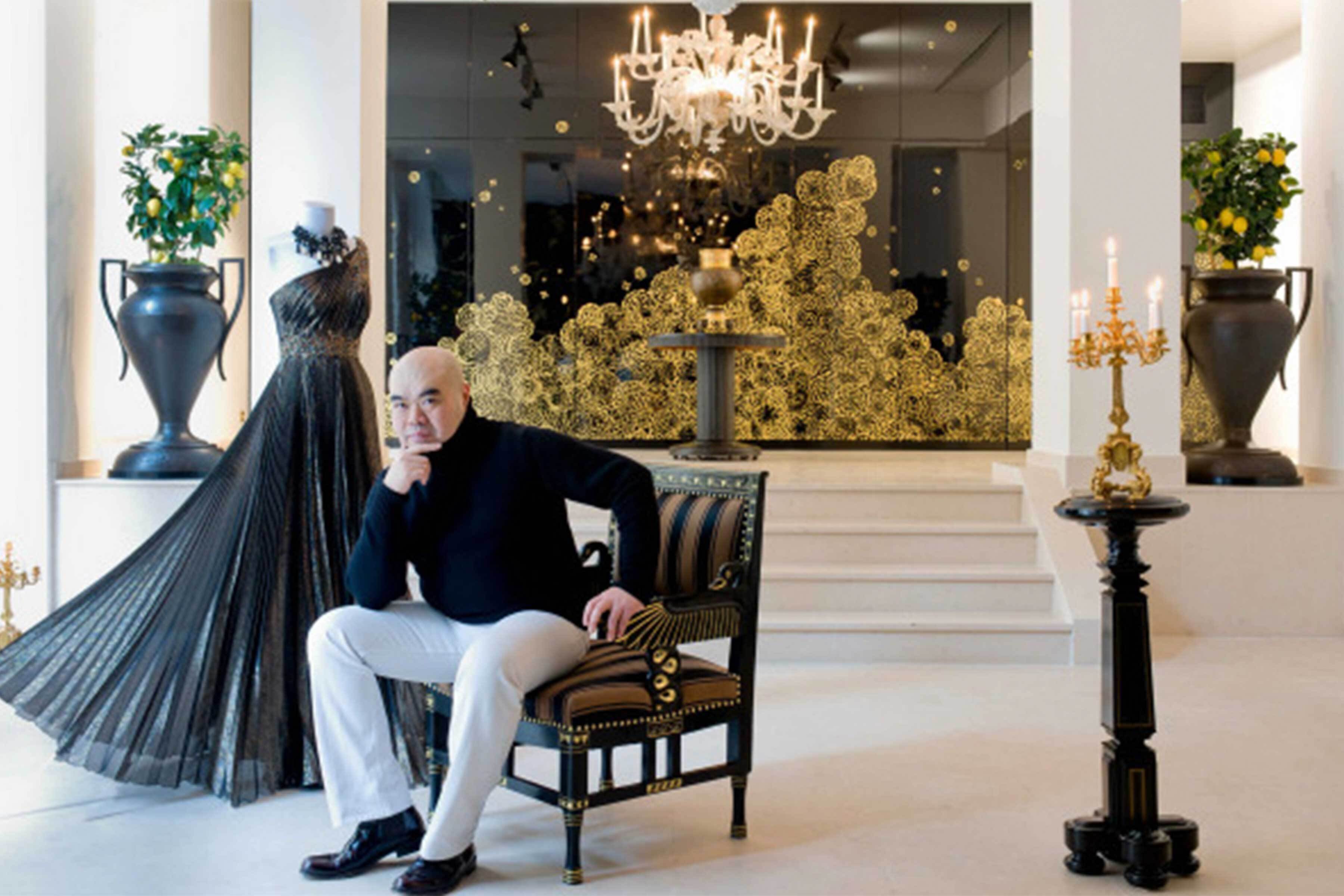
PEMCAST | Sep 09, 2025
PEMcast 40: Fashioning the World with Andrew Gn
In the latest episode of the PEMcast, we bring you Andrew Gn: fashion designer, Singapore native, global powerhouse. Andrew Gn: Fashioning the World has its North American debut at PEM this September.
When asked to describe Andrew Gn, Petra Slinkard, our Chief Curator, the Nancy B. Putnam Curator of Fashion and Textiles and coordinating curator of this exhibition, said: “I love describing Andrew because he's such a fulsome and sort of larger-than-life character. He doesn't necessarily see himself as any one singular thing, but rather he is an amalgamation of culture and history and a person who sort of absorbs and loves all of it.”
Andew Gn in his Paris atelier. Photo by G. de Laubier, courtesy of House of Andrew Gn.
Hear more about how Petra first met Andrew Gn years ago in Chicago, which led her to visit Singapore and to the artist giving 100 pieces of his collection to PEM. Gn was educated in London and honed his skills in New York and Milan. He started out with a sewing machine in his living room and one assistant, then spent three decades designing in Paris. Named a “pioneer among foreign-born, Paris-based designers” by Vogue, Gn is one of Singapore’s most prolific creative forces.
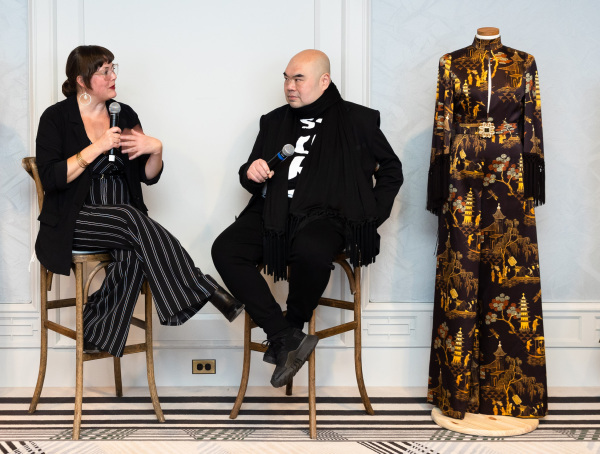
Andrew Gn and Petra Slinkard in 2023. Photo by David Tucker. Courtesy of the Peabody Essex Museum.
Over the course of 25 years, he has produced more than 80 collections and 10,000 elegant ensembles. And we can’t help but feel that these dresses, caftans, jumpsuits and earrings contain motifs that are awfully familiar to PEM visitors and staff members. Gn’s work draws on cultural influences that are exemplified across the museum collection, including Chinese export porcelain, Indian ivorywork and painted screens from across Asia. His oeuvre encompasses more than just clothing: his work celebrates cross-cultural exchange and technical innovation.
Petra Slinkard, Chief Curator and Nancy B. Putnam Curator of Fashion and Textiles, in Andrew Gn, Fashioning the World. Photo by Kathy Tarantola/PEM
As a collector from childhood, Gn loved old books, Asian ceramics and porcelain. He practically embodies PEM, the oldest collecting museum in the United States.
“My everyday life is still very multilingual and multicultural,” he said in our interview when we met up with him by phone in his study in Paris, looking out on his lush gardens. “I have friends from all over the world. So I would converse in Italian in a phone call and I will Zoom with another friend in English, or I'll be speaking to my sister in Mandarin or Teochew, a dialect that we speak at home…I think I have a very rich and layered life, and I want people to know my story through my work.”
The designer’s curiosity about the world shows in his ensembles that reflect his travels, his flower garden and various interests he’s collected over the years, like preservation of coral in the Great Barrier Reef. And it is with curiosity that we set out with our curators to look at PEM’s collection through Andrew’s eyes to find the kind of things that are reflected in his gorgeous fashion collections.
LEFT: Andrew Gn, belted dress with brocade belt, and choker with synthetic pearls on black grosgrain, 2018. Promised gift of Andrew Gn. Peabody Essex Museum. Photo courtesy of House of Andrew Gn. MIDDLE: Andrew Gn, synthetic coral print silk georgette caftan with embroidered collar and tusk earrings, 2022. Promised gift of Andrew Gn. Peabody Essex Museum. Photo courtesy of House of Andrew Gn. RIGHT: Andrew Gn, iris print jumpsuit with embroidered bouquet appliqué on bustier, and daisy earrings with purple rhinestones, 2021. Promised gift of Andrew Gn. Peabody Essex Museum. Photo courtesy of House of Andrew Gn.
"I think his designs speak to this idea of cross-cultural connection in wonderful ways that is so true of so many of the objects in this gallery,” said Karina Corrigan, PEM’s Deputy Chief Curator and the H.A. Crosby Forbes Curator of Asian Export Art, as she showed us around PEM’s Asian Export Art gallery. “It certainly is one of the many things that's been really fascinating and wonderful about working with Andrew, and I was so thrilled to hear that he has many different kinds of collections, but is particularly passionate about Chinese export porcelain. PEM is known internationally for our Chinese export porcelain collection."
LEFT: Andrew Gn, Coromandel print satin silk caftan with embroidered trim and ostrich feathers, 2021. Promised gift of Andrew Gn. Peabody Essex Museum. Photo courtesy of House of Andrew Gn. RIGHT: Asian Export Art Gallery. Courtesy of the Peabody Essex Museum. Photography by Kathy Tarantola/PEM.
Corrigan shows us a huge lacquer screen in PEM’s collection that resembles a screen in Gn’s personal collection, as well as a caftan he designed. We look at an ornate chair made in India that brings together English furniture design with Indian animal and mythological motifs, and a luxurious mid-18th century potpourri holder compiled from the work of artisans in China, Japan and France. Corrigan is only one of our resident experts who delves into individual objects to share how their motifs, materials and rich colors resonate within the fashion collection of the House of Andrew Gn. You can hear these descriptions more in depth on our Inspo Quest, a multimedia scavenger hunt through our galleries that will be available to pick up inside the Andrew Gn: Fashioning the World exhibition.
LEFT: As a child, Andrew Gn was a fan of the Chinese Classic novel “Dream of the Red Chamber” for its attention to detail about decor and fashion. Here are several copies in English on the shelves of PEM’s Phillips Library. Photo by Jennifer Hornsby/PEM. RIGHT: The Monitory Vision Fairy expounds, in ballads, the “Dream of the Red Chamber." Illustration for Chapter 5, in Zeng ping quan tu zu ben Jin yu yuan, [China]: Qiu bu fu zhai, 1908. Photo by Yao Wu/PEM.

Clothing ready to be taken to the gallery, waiting in storage in PEM’s Hawkes Collection Center. Photo by Ellie Dolan/PEM.
We also take you to our 120,000-square-foot James B. and Mary Lou Hawkes Collection Center to hear our staff unboxing Gn’s luxe beaded gowns. Some of these pieces feature butterflies, layered with meaning across several different Asian cultures, and the bright blooms drawn from Gn’s love of flower arranging.
It’s no surprise that a life in search and obtaining beauty has left the designer believing in its power. “I believe the power of beauty could massage your soul,” he said. “It is healing, and can make you a much better person.”
Making its North American debut, Andrew Gn: Fashioning the World is on view at PEM from September 13, 2025 through February 16, 2026. Come explore the designer’s life and legacy through nearly 100 stunning works, including clothing, accessories, original illustrations and digital media. The exhibition is divided into thematic sections highlighting Gn’s signature blend of Western aesthetics, art history and Asian decorative art and design. Want to celebrate global fashion with us? PEM’s annual gala is themed around the exhibition, and takes place on November 8. This episode of the PEMcast was produced by Dinah Cardin and edited and mixed by Marc Patenaude. Our theme song is by Forest James. Thank you to our PEM curators and staff who offered their time and expertise for this episode.
Andrew Gn: Fashioning the World is organized by the Peabody Essex Museum in collaboration with the Asian Civilisations Museum, Singapore. This exhibition is made possible by The Coby Foundation, Ltd. and Carolyn and Peter S. Lynch and The Lynch Foundation. We thank Jennifer and Andrew Borggaard, James B. and Mary Lou Hawkes, The Creighton Family, Chip and Susan Robie, Timothy T. Hilton, and an anonymous donor as supporters of the Exhibition Innovation Fund. We also recognize the generosity of the East India Marine Associates of the Peabody Essex Museum.

PEMcast Episode 40: Fashioning the World with Andrew Gn
Transcript
Andrew Gn: I believe the power of beauty could massage your soul, it's healing, and it can make you a much better person. This is Andrew Gn, fashion designer, Singapore native, Global Powerhouse. I'm going to speak Mandarin right now. (In English: Hello everyone, my Chinese name is Yin Chang-Tao. My English name is Andrew Gn, I'm a fashion designer. I was born in Singapore, I've been living in Paris for more than 30 years.)
Petra Slinkard: So Andrew uses the phrase that he is a citizen of the world.
Dinah: This is our chief curator, Petra Slinkard. She's also our Nancy B. Putnam curator of fashion and textiles, and coordinating curator for Andrew Gn, Fashioning the World. In my opinion, he shares that with an exclamation point, as a point of celebration, as a point of embrace.
Petra: He was born and raised in Singapore, to a hybrid family of Japanese, Chinese, Peranakan ancestry. Andrew speaks seven languages. I shall speak in French right now.
Andrew: Bonjour, je m'appelle Andrew Gn, je suis un stylist de la mode, couturier en fait. J'étais né à Singapour, je suis de Singapour, et la maison Andrew Gn est basée à Paris, et ça fait 30 ans que j'habite à Paris. I shall speak in, most probably in Italian right now.
(Speaks in Italian)
Petra: He was educated in London, he spent time honing his education in New York. He went to Milan and studied there, and then eventually found his way to Paris.
Dinah: Where are we catching you? Where are you right now?
Andrew: I'm back in Paris, it's in the middle of summer, it's really quite hot today. I'm in the library of the house, which is my favorite room. And the library actually opens up to, from where I'm sitting, I can actually see the garden. And the garden is large this year, it's filled with hydrangeas of all sorts, roses, jasmine, ferns, maple trees. And the library is my favorite room because it's filled with books and art and ceramics, ceramics from French masters, monchromes from the 17th and 18th century, from China, from Vietnam, 12th and 13th century. Sculptures, tribal art, so it's very, very comfy, and also I feel very protected. It's like the decor is hugging you.
Petra: He doesn't necessarily see himself as any one singular thing, but rather he is an amalgamation of, you know, culture and history, and a person who sort of, I think, absorbs and loves all of it.
Dinah: Welcome to the PEMCAST, conversations and stories for the culturally curious. From the Peabody Essex Museum in Salem, Massachusetts, I'm your host, Dinah Cardin. In this episode, we bring you Andrew Gn and his collecting habits, his clothing designs, his wit and wonder about the world. We also bring you behind the scenes of PEM's vast collection. Our curators will delve into individual objects and share how they see these objects, motifs, materials, and rich colors within the fashion collection of the House of Andrew Gn. You can hear these descriptions more in depth on a scavenger hunt we put together that takes you to a few of our galleries, seeing our collection through Andrew's eyes. But first, back to our curator, Petra. How do you sort of describe him to somebody who's never heard of him?
Petra: I love describing Andrew because he's such a fulsome and sort of larger-than-life character, if you will.
Andrew: My everyday life is still very multilingual and multicultural, and I have friends from all over the world. So I would converse in Italian in the phone call, and I will Zoom with another friend in English, or I'll be speaking to my sister in either Mandarin or Teochew, which is a dialect that we speak at home.
I think that that is really our lives today, because we don't do just one thing. We do many things. We do multicultural. Like in the morning, in terms of food, I mean, I will have a croissant. Lunch, I might be having sushi. And then I might be having an English afternoon tea, and then followed by a French dinner.
I mean, this is our lives. So I think, ultimately, I feel that we are immersed in this global life. And I think the three words, the three As I would say, I accept, then I adopt, and then I get adopted.
Petra: You know, on the serious side, he is a tremendous fashion talent. He has an impeccable attention to detail. He practices demi-couture, which is the highest level of fashion, one step away from haute couture. The detailing and his attention to materiality is really extraordinary. You know, on the fun side, or the sort of wild and wondrous side, Andrew is sort of a sieve, if you will, sort of a funnel of so many different ideas, so many different design clues and inspirations. And he sort of takes from everywhere.
And that has been really fun, I think, and it infuses his work with fun, because he is a storyteller in and of himself, and uses his collections as a way to weave these narratives that are both visual and also melding aspects of art history, cultural history, and his own lived experience as a Singaporean.
Yao Wu: So, I was very intrigued when I read that Andrew Gn claimed that his first inspiration of fashion was an 18th century Chinese literary classic called Hong Lou Meng, or translates as The Dream of the Red Chamber.
Dinah: This is Yao Wu, PEM’s Huang Family Curator of Chinese Art and Culture. The book she's referring to, we have several copies of, both in Chinese and English, in PEM's Phillips Library collection.
Yao: If you haven't read it, I highly encourage you to read it. But what's great about the novel itself is that it kind of looks back at the bygone good days of this Jia family, whose lifestyle was filled with luxury and opulence. And just the attention that they pay to luxuries and proper rituals and everything. And Andrew Gn really talks about sort of how he started to read this novel as early as age 11, which is quite early, because it's written in classical Chinese.
Andrew: That plays such an important role in my life. And so, there were actually illustrated books for children that my mother bought in the 60s for my… And sometimes literature is… it gives you a lot of rooms for imaginations, because they would describe quite precisely the decor of a room, the bonsai or the orchids they're displaying on the table, in what kind of pot, and what vases are used in which season to hold cherry blossoms and lotus and chrysanthemums. And they would describe about the clothing that people are wearing.
Yao: But what's depicted in the novel is, of course, the love and the happiness and the sorrow and the tragedy, eventually, of the characters. But then, along with it, along with the storyline, there is abandoned depiction of food consumption, of what clothes they wear, what jewelry that they wear, what objects they use in their daily life. And he talks about how that inspires his artistic kind of creation early on. And he said that he would go back to re-read that novel again and again and would always find new inspiration. And, you know, when I read that, I had like an aha moment. I was like, yeah, of course, that's just like Andrew's work.
Andrew: So when I was a kid, my brothers and sisters were already like grown up or teenagers, and they were just busy living the life, attending universities abroad or falling in love. And I grew up more or less all by myself. And so when you grow up by yourself, you have to use and entertain yourself with a lot of imaginations.
Petra: Yes, Andrew has a great affinity for Asian porcelain, Asian ceramics. And that's why I think our Asian export collection, you know, which is one of the best in the world, I think holds a really special place for him. He has many similar works in his own collection. And I think he collected his first piece when he was maybe 10 or 11 years old.
Andrew: So without knowing it, I was sort of building myself into that, you know, loving art and beauty. And of course, my parents were collectors. So whenever he can, when we're traveling, my father would bring me or drag me into the previews of Christie's and Sotheby's. And so in a way, he was training my eyes as well on beautiful things. I love discovering things. You know, I'm very curious. And I think that's really one of the things about me is I'm always curious. I'm looking for new things, new directions, a new way to look at things. And it never ends. You know, the world of collectors, it's a very passionate world. It's what you live with. It's what you see every day.
Dinah: So it's what comes up for you when you're creating.
Andrew: Yes, yes, absolutely.
Petra: I had the opportunity to meet Andrew Gn in Chicago in about 2015, I believe.
Dinah: Petra, again.
Petra: He was invited as a guest of the Chicago History Museum's Costume Council to be a featured designer. And we hit it off, and I was one of the first curators in the country to acquire works of his for a museum fashion collection.
Andrew: Well, I first met Petra when I first came to Chicago. She was this young, passionate, and very curious, and very talented curator. And we hit it off immediately.
Petra: And fast-forwarding to 2020, Andrew was organizing with our partners in this exhibition, the Asian Civilization Museum.
Andrew: And I said, you know, let's work with someone who knows me and also who knows my point of view, who gives another point of view from America. And we thought immediately of Petra, because she knew me very, quite well, and she knew what I liked. And it's a wonderful thing to do, to work with someone that you really trust and who understands you.
Andrew: He asked me if I would be interested in writing for the publication, and he wanted someone to speak about his design, his process, and his approach in the impact that it had on the United States.
Dinah: So Petra was invited to Singapore, specifically to the Asian Civilization Museum, to give a lecture on Andrew's work.
Petra: So it's interesting. Admittedly, I knew very little about Singapore when I entered into this project, and I'm grateful for the opportunity to have learned more about Singapore. And Andrew being born in 1966, just one year after the independence of Singapore, really, to me, stood out as an interesting mark.
That he, in a way, sort of personifies Singapore's recent and rapid growth as this international individual who has, in his own way, developed a great deal of success in Paris, but also at home.
Dinah: Petra's relationship with this international superstar was about to get even bigger in the form of a large acquisition. So he and his business partner promised over 100 pieces to the Peabody Essex Museum to help us not only round out our contemporary fashion collection. This includes the full clothing ensembles, several hand-illustrated works, embroidery samples and accessories. Yes, Andrew also makes his own earrings. Gorgeous shoulder dusters.
Petra: And so it really came to light for me that the Andrew Gn collection would be a great addition to the Peabody Essex Museum's collection because of the way that Andrew designed, the way that he thinks about cultures and history and art history in particular, and that there was a lot of overlap.
Dinah: One of the things Petra noticed when she was in Singapore was the overlap between the Asian Civilization Museum and PEM, partly because both Salem and Singapore had grown rapidly through global maritime trade.
Petra: And even though I had been told that there were a lot of similarities between ACM and PEM, it really came to light when I visited. Both institutions are interested in cultural hybridity and global trade. Both have very similar collecting habits and collections that have developed over the years.
Dinah: It's almost like he's the embodiment of our museum. We always say you can take a trip around the world just by going through our galleries, and it sounds like a conversation with him could do the same thing.
Petra: Absolutely. And in fact, one of the things that we talk about in the gallery is that through his clothing, in fact, through his designs, he himself has traveled the world. But mentally and emotionally and almost sort of metaphysically, he's embracing global travel through his clothing.
Dinah: So we've established that Andrew borrows from many cultures and mixes and plays. There's a dress that features Monet's water lilies. Andrew wanted to play with the idea of impressionism, making the design come to life when you stand back and look, just like in a Monet painting. Let's talk about this. So one of the things we're going to do is ask visitors to consider the complexity of how this is both cultural and visual appropriation. But let's look at it. That's often a sticky, wicked topic. But if we look at it through the eyes of a designer with a cross-cultural background who's sort of doing it on purpose, what do we mean by that?
Petra: I think Andrew approaches all of his work and all of his design from a perspective of respect and from a perspective of, again, celebration. These are visual clues and cues that he has derived, as I said, from his own collecting practices, from his own travels, and from his own experiences, that he then distills and reimagines in sometimes unexpected juxtapositions. So for one collection, he was inspired by street fashion of Kyoto and Tokyo, and then was melding that with the 1980s Italian design movement Memphis. The two couldn't really be more disparate, and yet in Andrew's world, they make perfect sense together. And I feel like those are the kinds of juxtapositions that offer these moments of celebration and recognition, but from a very respectful position.
Dinah: And so when people are here, and they're visiting the gallery, and this raises questions, it's like, let's ask these questions. Let's have a conversation. It's okay.
Petra: Absolutely, yeah. And I think Andrew is very excited to engage people in that conversation as well. You know, he finds inspiration everywhere, and I think that that is sort of first and foremost the foundation of his approach to design.
Yao: So now we're in the Double Happiness Chinese Art Gallery.
Dinah: This is Yao again, PEM’s PEM’s Huang Family Curator of Chinese Art and Culture
Yao: When you enter, you first encounter a very large altar set with a central incense burner, and then a pair of candle holders, a pair of vases. And it really reminds me of Andrew Gng's work in the sense that there are just so many visual motifs everywhere, you know, on the bodies of all these five ceramic pieces. But then the color as well, the colors, I should say, there are so many of them and so bright and, you know, so rich. But then when you look at the pair of vases on the two sides, there are eight characters that create the four sides of the two vases. These eight characters are the eight immortals of Daoism, a more indigenous and native mythology or arguably a religion of China. You also have things like, you know, deer and pine trees, etc. And these are natural symbols for longevity as well. And you get all sorts of symbolic icons or motifs on Andrew's clothes as well, whether you know them or not.
Dinah: We move to a case with delicate hairpins.
Yao: What we are standing in front of is two hairpins, one in the shape of a phoenix and another one in the shape of a dragon. And, you know, what's really cute is that you can still see the pearls or imitation pearls that suggest the beard of the dragon still moves in the display case. And, you know, that you can imagine when something like this is worn on your head or in your hair, it really creates sort of the animated movement of the mythical animal itself. And needless to say, they're so exquisitely made with all sorts of materials, right? Silver, copper, kingfisher feathers, jadeite and pearls, imitation pearls, glass. And that's kind of like Andrew. You know, he incorporates so many different materials into his clothes, into the jewelry that he designs. It's the whole package.
Dinah: Petra and I walk into our Asian export gallery. She leads me over to a map.
Petra: I hope that people see our works of art with a slightly new perspective, maybe with fresh eyes. But I also think that it would be great for people to have a different understanding of when we think about Western contemporary fashion in the 21st century, it is a global industry. And I think we forget sometimes that global hybridity is all around us. One of the things that really stands out to me is in our Asian export gallery, visitors are confronted with a map that, you know, typically when we think of a map of the world, it usually places North America and Europe at the center. But the curators of this exhibition specifically and intentionally flipped the map on its head in an effort to disorient people and to create a different juxtaposition. I think that that's a really smart and really effective way of looking at the world because, you know, as I was making my way to Singapore, not only was it a tremendously long journey, but I had to continually remind myself of where I was. And, you know, and I think that that's something that is a benefit for people as they experience the work of Andrew Gn.
Karina Corrigan: So this is a very complex object that I am sure Liberace would have loved. At one point, we said, these are the kinds of objects that incited the French Revolution. This is an object made of material from at least three different places.
Dinah: This is Karina Corrigan, PEM’s Deputy Chief Curator.
Karina: And the H.A. Crosby Forbes Curator of Asian Export Art. And we are in the Sean M. Healy gallery of Asian export art, which is one of many places in the museum where you can find these kinds of works of cross-cultural exchange. So it's not a subtle object. It's a very vivacious thing. Those flowers are so delicate and they look, some of them, real. So it's designed to have potpourri in it to make your interior that doesn't smell so great smell much better. And this would have been in a very wealthy person's home in Paris in the mid-18th century. It's composed of two different things imported from Asia, a Chinese porcelain figure of a stag, and then what was probably or originally a Japanese teapot that has had its spout and handle cut off. And then those two things have been mounted in very elaborate French gilded bronze mounts. And those mounts have been augmented by French soft paste porcelain flowers.
Dinah: When people come here in the fall and they see this fashion exhibition, and then they might come and look at the collection, what do you hope they think of in terms of making these connections? How do you hope they put this together and get out of this experience?
Karina: Well, I think Andrew, as a designer who has spent so much of his life in France, there's so many things here that were made for the French market. But obviously, he was born in Singapore, and he himself has a very multicultural background. So he is a citizen of the world in many ways. And I think his designs speak to this idea of cross-cultural connection in wonderful ways that is so true of so many of the objects in this gallery. It certainly is one of the many things that's been really fascinating and wonderful about working with Andrew. And I was so thrilled to hear that he has many different kinds of collections, but is particularly passionate about Chinese export porcelain. And we are, of course, known internationally for our Chinese export porcelain collection, so it's been fun to talk with him about that.
Dinah: We move to a decadent chair that Corina says is close to chairs owned by the British Royal Collection.
Karina: When you see the Royal Family waving from the balcony, just inside that balcony are a whole suite of chairs just like this. This is one of my favorite objects in the gallery. This is a chair made in the 1770s in India, on the east coast of India. The design of the chair is based very closely on 18th century English chairs, chairs designed by Thomas Chippendale, but no English cabinetmaker would have ever made a chair entirely veneered in ivory. And so that's very much speaking its Indian origins to us quite loudly here in the gallery, not only with the lavish use of ivory, but also look at the back splat and that crest rail. We've got intertwining serpents on the back splat, and we have makara, these mythical beasts, decorating the crest rail. So here we're seeing what is at least in form a very English chair, but in materials and ornamentation is also very Indian. So I think this epitomizes for me this idea of aesthetic and cultural hybridity that is true for so many things in this gallery.
Dinah: One of Andrew's designs is a gorgeous dress in the black and gold colors of a lacquer screen, a screen that he owns. Apparently, when he visited our museum, he liked ours quite a lot too. It's 11 feet high.
Karina: So Sir John Eccleston was a textile merchant in London, and he made a lot of money importing Asian textiles. To the extent that we are able to track his journeys, he never went to Asia, but he clearly had agents who were helping him import Asian textiles. But somewhat unusually, he also commissioned this very large 12-fold lacquer screen. Lots and lots of these lacquer screens were imported into Europe in the late 17th and early 18th century. If you look at the top, you can see 10 of the 12 panels have an unusual symbol with this black cross and gold and red and green. That is the coat of arms of the Eccleston family. That would have been conveyed to the Chinese lacquer artists in Guangzhou who added all of the decoration to this very labor-intensive process to make lacquer.
Dinah: You heard right, the coat of arms of the Scottish man who had the screen made. Our screen also includes scenes that depict rice and silk production. This cultural mash-up feels very Andrew Gn.
Karina: Lots of wonderful vignettes that I think relate a lot to motifs in Andrew's work in these medallions on the lower part. So look at these beautiful cranes, the wonderful carp here, and I think the high contrast, the glossy, glossy black, and then the punch of the gold and the red, the red ground as well. Whenever I'm looking at lacquer, I love to think about the fact that we're seeing this in an environment with comparatively high light. But in an 18th century context, this would always have been experienced, at least at night, by candlelight. So think about the candlelight flickering near this on the shiny, shiny black and on the bright gold and red that I think really would have made these already pretty spectacular objects even more vibrant and exciting.
Petra: So we're standing right now in a really special space in the museum featuring a work of art entitled All the Flowers are for Me by Anila Agha.
Dinah: Petra takes me to a beloved gallery in our museum, popular with the Instagram crowd. A huge, glowing cube that fills the room with light and shadow.
Petra: And this work, I think, is special for a number of people because it offers a nice respite, in a way, from the rest of the museum, but is also a completely immersive experience where you see these really delicate, projected, floral, almost lace-like patterns on all four walls that surround the visitor. And in a way, it's really reminiscent as well of Andrew's work, the intricacy, the delicacy of many of the patterns that he also was employing in either all-over patterns or in very strategic ways, such as a collar or a trim. And so as I think people explore Andrew's work, they're going to hopefully see the museum's collection in a new way. You know, one of the things that I really respect about the House of Andrew Gn and Andrew's approach is that he was very democratic in who he works with. You know, many of Andrew's clothes are of varying sizes, and so he is very body positive in his clothing designs. And the clothes, visually, are very complex. You know, there's a lot of ornamentation. They're quite, you know, striking visually. But construction-wise, foundation-wise, they're very simple. And there's an interesting sort of balance in, you know, what he determines is he wants people to sort of step in and zip up and, you know, get on their way because women...
Dinah: Yes, please.
Petra: Because women don't have time, you know, to fuss over clothing. And so I think what really drew many of these women of note in these kind of red carpet pieces is that they could feel very comfortable and very empowered and yet still look spectacular and really hold a lot of visual presence on the red carpet, which, of course, we know is a very competitive environment. You know, he custom-designed, for instance, this chrysanthemum print. So, again, hand-drawn in the studio and then distributed to a textile studio in Paris and in Italy. And that is so gorgeous and looks so comfortable.
Dinah: Talk about comfort. We then look at a jumpsuit from the Spring-Summer 2021 collection, inspired by one of the kimonos in his mother's collection.
Andrew: I always believe that comfort is such an important element because if you're comfortable, then you'll be able to be graceful and elegant. And I always believe in designing dresses that a woman could just step in, zip it up and walk out on the street. And this is something which is so modern. I truly think that it's really difficult for a woman, especially in the kind of modern life we're living in, that you have to spend time, like all the time, adjusting your neckline. And I just think that, you know, we don't need that. And the only way to be graceful and elegant is to feel comfortable. And I always believe that a dress should caress your body.
Dinah: Why don't we name-drop some of the famous people who wear his clothing?
Petra: So it's really interesting. Andrew has been designing quietly for women of note for years and years. And it was really only until we started to do the exhibition that I became so aware of his reach.
In fact, at ACM, they sort of determined this as his global reach because there is so much impact. But, you know, in the U.S., Andrew has designed for Faith Hill. He's designed for Janelle Monae. He's designed for Mary J. Blige. He's designed for Reese Witherspoon.
Andrew: And Lady Gaga is quite special for me as well because she's known for being quite fashion-forward, edgy, cutting-edge and outrageous. Her stylist came in and picked up this lovely, youthful and modern mini dress in a triple silk crepe in black with a row of Renaissance-inspired jewel buttons running down the front and a white guipure lace collar. And she looks very ladylike and very graceful and very elegant. And I like that very much because it's like a transformation.
Petra: You know, there are several actresses and women of note in Paris, but also Princess Rania of Jordan and the Princess of Greece, and then, of course, you know, Kate Middleton being probably the most world-renowned client of his. And this ensemble was actually worn by the actress Lily Collins in the show Emily in Paris. And if you know Emily in Paris, you know that Emily in Paris is probably more renowned for its fashion than anything else. And Andrew's work has made quite a few debuts in the television series. Petra is showing me images of Andrew's designs. And then this is a really exciting piece, an acquisition for the museum. This is from autumn-winter 2022. And what we're looking at is an ensemble with a beautiful herringbone coat with cameo buttons.
Dinah: At this point, you know that nature is a constant theme for Andrew.
Petra: Florals are a consistent motif in his designs. He himself is a fabulous floral designer. In fact, I think that that's sort of where he finds his zen and sort of takes his mental breaks.
Dinah: So like flower arranging?
Petra: Flower arranging, yeah, absolutely. You know, he has been struck by butterflies and coral, which are also perennial motifs in his collections. Petra shows me a piece from the spring-summer 2022 collection, a gleaming white caftan that features a motif of bright coral. This was a project that Andrew did in collaboration with the Great Barrier Reef Foundation.
Andrew: Well, you see, I have a very special relationship with corals. Since a child, I'm obsessed with it.
So be it illustrations in Little Mermaid or in the still life of an old master, or even it could come as a bonsai mounted in a beautiful pot in the Imperial Palace in China. It fascinates me.
Petra: But you start to see, again, the use of florals in different ways. And, you know, the photos just simply do not do them justice. To see the works in pieces, they really shine. And as we're working with our design team on this exhibition, we continue to go into storage to look at the pieces in person to remind people of just all of the texture and all of the color and all of the layering that sometimes gets a little lost in the photos.
Dinah: And so we go into storage. I feel like we're raiding someone's closet.
Angela Segalla: That's, I love that feeling. Because it feels very intimate, right?
Dinah: This is Angela Sagala, Director of Collections Stewardship here at PEM and at the James B. and Mary Lou Hawks Collection Center.
Angela: Oh, wow. This color punch, this red one, which we're going to have to look at out in the light, and this one, which is sort of poochy-ish.
Group: Oh, my gosh!
Dinah: Angela is going through large storage cabinets, taking out evening gowns, coats, and skirts to show them to a few of us from PEM's marketing department. And we're here for it. So it's just so great, we're standing here looking as if somebody's closet has been thrown open.
Angela: These particular cabinets, they're all custom-made. We have 240 of them on this mezzanine, which is 8,500 square feet, and the gasketing is really a key component of the care of the objects inside because they prevent any sort of water from getting in if there were to be a problem. If there were to be a fire, if there were to be a leak, if there was some kind of contaminant in the air, the objects are protected.
Andrew: Oh, when Angela and Petra showed me the Conservation Center, it was very impressive. I mean, they showed me these mobile wardrobes that they built to house all your archives, your archives of clothing, so garments of 18th-century garments and 19th-century dresses and early 20th-century dresses. It was really, really wonderful, and they showed me also different techniques, modern techniques of restoring and preserving and conserving pieces of textiles and garments.
Angela: They arrived several months ago. They were unpacked and inspected to make sure that everything survived the trip okay, and they did, and collection management takes care of the housing and so forth. So you can see that these hangers, they have his name on them. We're trading them out as we work through the collection for our hangers, which are acid-free, which don't have any hard edges to them.
Andrew: So I immediately knew that, you know, my babies will go to a very good home, and so it's really a great honor to be able to show at Peabody Essex Museum and knowing that my babies are in very good hands.
Angela: So as you can see, everything is, I'm holding it by the hanger, not touching the object itself, which is kind of funny because clothing is such a familiar thing to everyone, right? It's a domestic thing you have in your home, and when it comes into a museum collection, it's no longer a chair. This is no longer a coat. It's an object in the collection, and so you can't handle it the same way, and it's tempting to want to touch this fur, but you cannot.
Dinah: To want to touch this soft fur collar.
Angela: Yeah. You cannot, but look at that beautiful architectural detailing. Isn't that lovely?
Dinah: You work with so many different kinds of objects, every kind of object that we have here at the Collection Center. What does working with fashion do for you that's different?
Angela: Oh gosh, it's so full of inspiration. I think I can imagine living with fashion more than I can imagine living with some of the other things that we take care of, especially a contemporary designer like this. I imagine myself living in these, and what does this say about a person who can breeze through a living room wearing this lovely, flowy, contrasted gown, and I'm just very excited that not only do we get to work with a designer of this caliber, but to enjoy it in PEM's collection for years to come.
Dinah: There's something about seeing them in person versus images.
Angela: Oh, forget it. Images are great for a lot of different reasons, but when you can get up close and personal with an object like this, and you can see these velvet flowers, and you can see that over time some of the direction of the velvet goes one way, and some of it goes the other way, and you're able to see that. Now this is the one that reminds me of my mom, because this was her favorite color, this sort of olive-y bronze. Gorgeous. And I think that's probably why I'm drawn to this, but again, the textures are, you know, they're calling out, and this one, the velvet, certainly, the little fur trim, and more sequins, and this color combination. Yes. I'm wearing this in Paris. There you go. That's what I'm doing.
Dinah: And these shapes, so like these triangles up on the shoulder in these copper-colored beads. Yeah, exactly. These copper-colored beads, which are so complementary of this shimmering fabric.
Angela: That color is so interesting because the way the light changes when you move it, the color changes.
Dinah: This is lux.
Angela: Total lux.
Dinah: Now we're looking at a white dress with meticulous beading.
Angela: I don't know this woman, but I would really love to be her. Like, this is someone who routinely goes out on a Wednesday night to a ball.
Dinah: This has almost a 19th-century feel to it, too.
Angela: Yeah, it does. And this is what, you know, these little sort of beads up here, which look like seeds to me, they remind me a lot of Island Bride, another object in our collection that's on view outside the Fashion and Design Gallery, and I think it's particularly appropriate for PEM to be in our location and our association with sea and our maritime history, and this just brings it all together for me.
Dinah: Angela brings out another piece, a silky gown.
Angela: So I'm gonna save my favorite one for last, and this beautiful flowy piece, now to me this looks like something from, you know, the 1940s. I just love how this moves, and this lovely detailing around the neck just give it, again, the contrast and the attention.
So we have, like, tulips and butterflies again. Yep, tulips, butterflies. So do you see what I mean when I say I'm getting to know Andrew through his choices? These motifs that repeat, the textures that repeat in different ways, the use of color, the use of movement, all of these things are helping me to get to know him a little bit more. My goodness, they really, they really give me the feeling of how lucky I am to work in close proximity to these things for a while, you know? For a short lifetime of these objects, we get to spend time with them, and that is truly a privilege.
Dinah: His fashion design studio, House of Andrew Gn, closed in 2023. But that doesn't stop Andrew from constantly creating. He's excited to finally have time for new projects, including cataloging his art collection.
Andrew: Also, I'm looking at creating my own foundation as well. So there are many things coming, and obviously I'll share it when I'm ready. I've lived in many countries and multicultural, and it's an interesting life. I think I have a very rich and layered life, and I want people to know my story through my work. To the listeners, I welcome you to my retrospective exhibition at Peabody Essex Museum. I'm so happy to be able to share my journey with you.
Dinah: That's our show. Thanks for listening. Making its North American debut, Andrew Gn, Fashioning the World, is on view at PEM from September 13, 2025 through February 16, 2026. Come see this prolific creative force who Vogue called “a pioneer among foreign-born Paris-based designers.” This episode of the PEMCast was produced by me, Dinah Cardin, and edited and mixed by Mark Patenaude. Thank you to our PEM curators and staff who offered their time and expertise for this episode. Listen to more in-depth curator descriptions of PEM objects that just might remind you of Andrew Gn's fashion designs in a scavenger hunt we've called Info Quest. Find more information as well as more episodes of the PEMCast and details about our Andrew Gn-themed gala this fall at PEM.org.
Blog
Dressing up for a Salem Main Streets Fashion show inspired by PEM artworks
4 Min Read

Blog
A Fashion Fête Fit for an Icon, Plus One Curator’s Favorite Memory of Yolanda
4 Min read
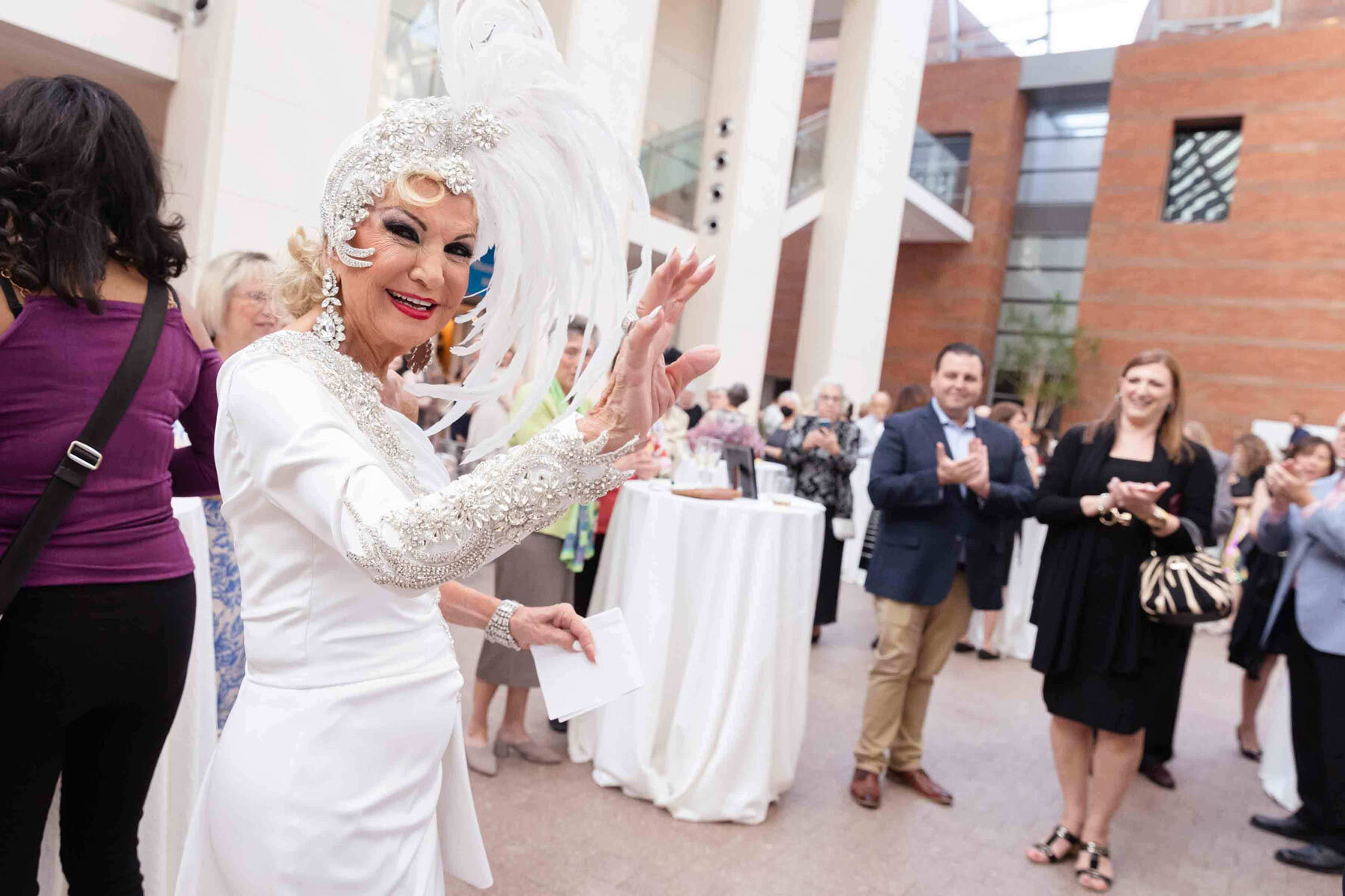
Press Release
PEM Presents the North American debut of Andrew Gn: Fashioning the World

PEM PRESENTS
Artists For Humanity
Sunday, August 24, 2025 from 2-3 pm
